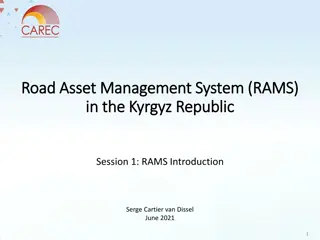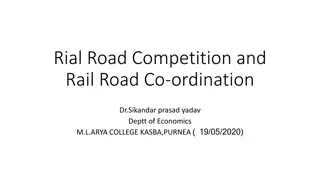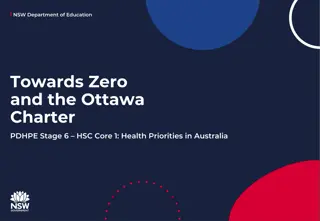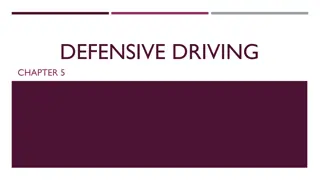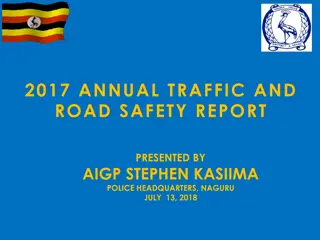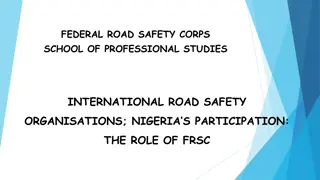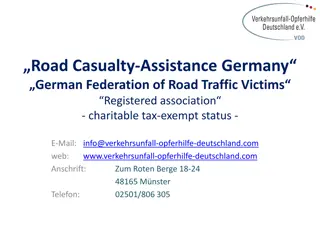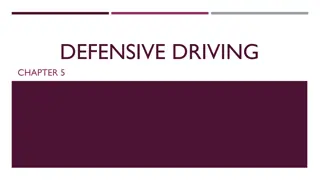
Financial Strategies for College Education
Learn about different ways to pay for college, including using your own resources, college savings plans, borrowing money, grants, scholarships, and more. Discover the cost of college and debunk common scholarship myths to help you navigate the financial road to higher education.
Download Presentation

Please find below an Image/Link to download the presentation.
The content on the website is provided AS IS for your information and personal use only. It may not be sold, licensed, or shared on other websites without obtaining consent from the author. If you encounter any issues during the download, it is possible that the publisher has removed the file from their server.
You are allowed to download the files provided on this website for personal or commercial use, subject to the condition that they are used lawfully. All files are the property of their respective owners.
The content on the website is provided AS IS for your information and personal use only. It may not be sold, licensed, or shared on other websites without obtaining consent from the author.
E N D
Presentation Transcript
The Financial Road to College
How can I pay for college? Pay with your own resources College Savings Plans/Accounts Borrow money Student (federal aid) and parent loans (PLUS loans) Need-based and non-need based Grants Free money to pay for college or a career school The grantee has certain requirements and obligations to fulfill Employment Federal Work Study Obtain college credit while in high school Dual Enrollment Credit by Examination courses: Advanced Placement, Cambridge, International Baccalaureate Scholarships Financial aid award for a student based upon various criteria
How much does college cost? Type of College Average Yearly Tuition and Fees $4,475 $6,108 $23,890 Average Cost per Credit Hour* $149.16 $203.60 $796.63 Public Two-Year College (in district students) Public Four-Year College (in-state students) Public Four-Year College (out-of-state students) Private Four-Year College $32,410 $1080.33 *One typical college course is 3 credit hours. An average student takes 5 courses per semester (15 credits), earning 30 credits per year. Besides tuition, students will also be required to pay for books, supplies, food, as well as any additional costs such as housing, transportation, and other living expenses.
Scholarship Myths I ve heard Scholarships need to be paid back. The truth A scholarship is an award of financial aid. It does not have to be repaid! It is best to start as early as possible. Ideally, your junior year but some scholarships can be earned as early as middle school! You should wait until your senior year to search for scholarships. There are many scholarships that do NOT take grades or athletic ability into consideration! You have to be a top scholar or athlete to earn a scholarship. Some scholarships do require an essay but it is often more about WHAT you write than how well it is written. You have to write a great essay to earn a scholarship. Every dollar earned is a dollar saved from a loan (which must be repaid) or out of pocket. Most scholarship awards are small and not worth the effort of applying.
Types of Scholarships Academic Scholarships - These scholarships are awarded to students with the most exceptional GPA, most impressive series of extracurricular activities, and a history of public service. Average Academic Scholarships - Take a student's academic record into consideration, but they also give weight to a student's community service, leadership qualities and the strength of their test scores and contest essays. They also look at a student's other school activities such as sports, art and music. Athletic Scholarships - Students hoping for an athletic scholarship have to demonstrate both a high level of ability in their sport of choice, as well as a solid academic background. These scholarships are extremely competitive. Scholarships for Minorities - These scholarships can be general or specific in their ethnic requirements, with some being open to all minority students while others are designed to benefit one ethnic group in particular. There are also a large number of minority scholarships sponsored by individuals and associations aimed at diversifying certain areas of the professional workforce (such as engineering, medicine, or mathematics).
More scholarship types Scholarships for Women - These scholarships do more than just provide financial aid for college, they can also provide a pathway into the worlds of business, science and politics. Many of these scholarships are tied to specific areas of study. Creative Scholarships - These scholarships are highly competitive, and applying students must present samples of their artwork to be considered. Unusual Scholarships These scholarships run the gamut from frivolous to unexpected. They can be sponsored by individuals, businesses, local associations, or national organizations. Examples include the scholarship award for the best prom dress fashioned by Duck tape. On the other end, a scholarship may be offered for children of Italian immigrants. Community Service Scholarships These scholarships are awarded to those students who love to give back to their communities. These awards may be smaller, but everything counts when finding money to attend college!
Tips for completing a scholarship application: Remember that the application is your first impression. The way you fill out an application can make or break your chances of receiving funding. Read the entire application and make sure you are eligible before you apply. Follow all directions. Research the background, history, and goals of the scholarship. This could help you as you complete the application. Make a copy of the application and prepare an initial rough draft as a practice application. Once you are satisfied, transfer it neatly to the actual application. Do not leave blank spaces! If you don t have an answer to a specific question, write not applicable where appropriate.
Take Stock in Children Scholarship Opportunity The Brevard Schools Foundations Take Stock in Children program provides mentoring and college scholarships to Brevard County s deserving low- income youth. Scholarship recipients and their parent/guardian sign a participation agreement pledging that the student will attend school regularly, meet with a mentor, remain drug and crime free and attend all required TSIC events. The parent/guardian agrees to support and encourage the student to achieve their full potential. Upon successful completion of the program, the student will receive a 2-year college scholarship (Florida Prepaid account for 60 credit hours) payable at the state college rate.
Eligibility Requirements: Student must be enrolled in grades 7, 8, or 9 in a Brevard County Public School. Student must have a GPA of 2.5 or higher. Household must meet federal income guidelines. Meet at-risk guidelines. At risk can mean a variety of conflicts, for example: living in a single parent home, parents did not graduate with a Bachelor s Degree, student being raised by a grandparent, a sick or a disabled family member. Student must have passed their most recent state assessments in reading and/or math. Both student and guardian must complete the application in its entirety and attach all required documentation. Incomplete applications will not be processed! Student currently has and agrees to maintain a drug and crime-free record. Student and parent must attend the scholarship interview. It is strongly recommended that the student participate in AVID, if available at their school. Only those students selected as a semi-finalist will be notified.
Upon selection, the student will receive: A Mentor an adult volunteer who will meet with the student weekly at school to assist and encourage them to achieve their full potential. A College Success Coach an adult who will monitor student academic progress and work with the student, parent, and school staff to ensure all students are working to their maximum potential and utilizing all available resources to achieve their academic goals. 2-Year Scholarship a Florida Prepaid tuition only scholarship (valued at 60 credit hours, payable at the state college rate), which can be used at any public university, college, or vocational/technical school in Florida.
To apply, visit: https://bsftakestock.awardspring.com/ Applications must be complete, with all required documentation, in order to be processed. Applications are due no later than Monday, November 4, 2024
Florida Bright Futures Scholarship Program The Florida Bright Futures Scholarship Program is a merit-based scholarship which rewards Florida high school graduates for high academic achievement. Academic eligibility can begin as early as middle school (as soon as the first high school course is completed). This is the easiest scholarship to apply for meet the eligibility requirements and complete the FAFSA (Free Application for Federal Student Aid) and the money is yours! The award amount for the Academic Scholars Award is $212 per credit hour (2024-25 school-year)! The award amount for the Medallion Scholars Award is $159 per credit hour (2024-25 school- year).
Florida Bright Futures Scholarship Highlights: Weighted GPA ACT/SAT/CLT test scores Volunteer and/or paid work hours If you successfully graduate with a Cambridge AICE or International IB Diploma, you will automatically receive the FAS award regardless of your GPA and test scores For more information, visit: https://fl02201431.schoolwires.net/Page/4935
Scholarships Search Information NEVER pay a service to identify scholarships for you. www.fastweb.com www.scholarships.com www.raise.me Enables students to earn mini scholarships throughout high school, starting as early as 9th grade, for doing the things that best prepare them to succeed, whether that s getting good grades, volunteering in the community, or joining an extracurricular activity. No scholarship amount is too small. Several small scholarships add up!









